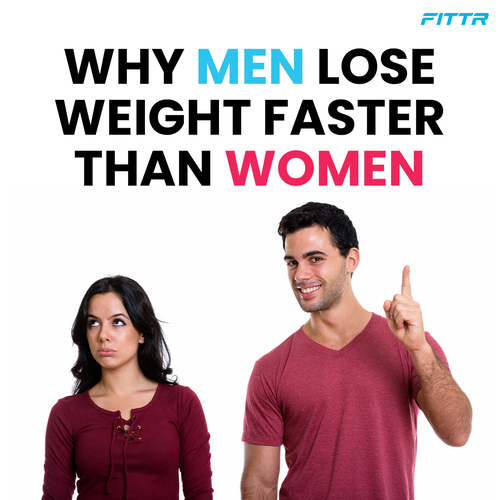
While healthy eating is not inexpensive, there are many ways you can make it cheaper for your family. Here are some tips to help you eat a healthier diet with a smaller budget. You can still eat some fish and meat, but not enough to be considered a balanced diet. Fresh fruit and vegetables can be purchased. These items will usually be more expensive than fresh fruit and vegetables, especially when they aren't in season. Aim for a five-ounce serving of these items.
Although some people might feel healthy food is more expensive than others, it isn't true. Rice, beans, and organic produce can be had for less that 89cents. Organic produce costs around $1.10 per pound and a large McDonald's meal for $5.99. You can even save money on snacks by picking up some carrots instead of a packet of chips. They are also full of nutrition and will fill you up.

It is a good idea to purchase food in bulk. A case can be purchased to get discounts at local co-ops and health food stores. Some items can be discounted up to 30%. High-quality foods are worth the investment. There are many ways that you can save money while still eating well. Start by avoiding unhealthy foods. They are often more expensive than eating them. The convenience factor is also important.
Food costs are one of the biggest expenses when eating healthy. You can buy a lot of fruits and vegetables, but they are often expensive. A variety of vegetables and fruits can be a great way for you to reduce your food cost while staying healthy. A well-balanced diet will help you achieve optimum health and lower the risk of chronic diseases. Organic foods are an option if you don't have the budget to buy expensive food. You can even eat as much food as you want.
A key factor in eating healthy is fruits and vegetables. While you can eat lots of fruits and veggies in one day it will be more costly to purchase them when they're in season. It is possible to choose to eat the fruits and vegetables whenever you like. This will help you reduce the amount of food that you eat.

You can also eat fruits and vegetables. You need to eat fruits and vegetables for good health. It is easy to eat these foods. Many people struggle to afford healthy food. People are often afraid of the cost. They see fruits and vegetables as being expensive. But they are not necessarily cheap. This is why they eat more fruits and vegetables. You can have as many as you wish.
FAQ
What is the difference of fat and sugar?
Fat is an energy source from food. Sugar is a sweet substance found naturally in fruits and vegetables. Both fats (and sugars) have the same calories. But, fats have more calories than sugars.
Fats are stored within the body and can contribute to obesity. They can lead to cholesterol buildup in the arteries, which could cause heart attacks or strokes.
Sugars are quickly absorbed by the body and provide instant energy. This causes blood glucose to rise. High blood glucose levels can lead to type II diabetes.
Do I need calories to count?
You might wonder, "What's the best diet for me?" or "is counting calories necessary?" Well, the answer depends on several factors including your current health status, your personal goals, your preferences, and your overall lifestyle.
The Best Diet for me - Which One Is Right for You?
My current health, my personal goals and lifestyle will determine the best diet for me. There are many diets available, some good and others not so good. Some diets work better than others. What can I do to make the right choice? What can I do to make the right decision?
This article aims at answering these questions. It starts with a brief introduction of the different types of diets available today. Next, we'll discuss the pros and cons for each type of diet. The final step is to determine which one is right for you.
Let's begin by briefly reviewing the different types and diets.
Diet Types
There are three main types, low fat, high protein, or ketogenic diets. Let's briefly discuss them below.
Low Fat Diets
A low-fat diet is one that limits the intake of fats. This is done by reducing your intake of saturated oils (butter, cream cheeses, etc.). It is possible to replace these saturated fats with unsaturated ones (olive oil or avocados). A low fat diet is often recommended for those who want to lose weight quickly and easily. This diet can cause problems such constipation as heartburn, indigestion, and even stomach pain. In addition, it may lead to vitamin deficiencies if a person doesn't get enough vitamins from their food.
High Protein Diets
High protein diets reduce carbohydrates to favor of proteins. These diets typically have more protein than other diets. These diets can help increase muscle mass and decrease calories. One problem is that they might not be sufficient to provide regular nutrition. They may also be too restrictive and not suitable for everyone.
Ketogenic Diets
Ketogenic diets are also known as keto diets. They are high-fat and low in carbs and protein. These foods are popular among athletes and bodybuilders as they allow them to train harder, longer and without becoming tired. They do require strict compliance to avoid any side effects like fatigue, headaches, nausea, and headaches.
Does being cold give you a weak immune system?
Cold weather can cause a decline in your immune system. Your body produces fewer white blood cell which fight infection. But, cold makes you feel better. Your brain releases endorphins that reduce pain.
What are the 7 best tips to lead a healthy, happy life?
-
Eat right
-
Exercise regularly
-
Rest well
-
Get plenty of water.
-
Get enough rest
-
Be happy
-
Smile often
What is the difference among a virus or a bacterium and what are their differences?
A virus can be described as a microscopic organism that cannot reproduce in another cell. A bacterium, a single-celled organism, reproduces by splitting into two. Viruses have a very small size (about 20 nanometers), while bacteria is larger (up to one micron).
Viruses spread easily through contact with infected bodily tissues, such as saliva and urine, semen, vaginal secretions or pus. Bacteria is usually spread directly from surfaces or objects contaminated with bacteria.
Viruses can get into our bodies through cuts and scrapes on the skin, bites, and other injuries. They may also enter through the nose, mouth, eyes, ears, vagina, rectum , or anus.
Bacteria can enter the body through wounds. They can also be introduced to our bodies by food, water and soil.
Both bacteria and viruses cause illness. Viruses cannot multiply in their host cells. They infect only living cells, causing illness.
Bacteria can spread within the host and cause illness. They can invade other areas of the body. That's why we need antibiotics to kill them.
Supplements and herbs can improve immunity
You can boost your immune function with herbs and natural remedies. You can use ginger, garlic, echinacea oregano oil and vitamin C as examples.
These herbal remedies shouldn't be considered a replacement for medical treatment. Side effects can include nausea, dizziness, stomach cramps and dizziness.
How can I lower my blood pressure
Find out the causes of high blood pressure first. Next, take steps that will reduce the risk. This could include eating less salt, losing weight if necessary, taking medication, etc.
It is important to ensure that you get enough exercise. Walking is a great alternative if you don't have the time or energy to exercise regularly.
Consider joining a gym if your current exercise regimen is not satisfying you. You will likely want to join an exercise group that shares your goals. It's much easier to follow a routine if someone is with you at the gym.
Statistics
- The Dietary Guidelines for Americans recommend keeping added sugar intake below 10% of your daily calorie intake, while the World Health Organization recommends slashing added sugars to 5% or less of your daily calories for optimal health (59Trusted (healthline.com)
- This article received 11 testimonials and 86% of readers who voted found it helpful, earning it our reader-approved status. (wikihow.com)
- According to the 2020 Dietary Guidelines for Americans, a balanced diet high in fruits and vegetables, lean protein, low-fat dairy and whole grains is needed for optimal energy. (mayoclinichealthsystem.org)
- Extra virgin olive oil may benefit heart health, as people who consume it have a lower risk for dying from heart attacks and strokes according to some evidence (57Trusted Source (healthline.com)
External Links
How To
What does the term "vitamins" mean?
Vitamins can be described as organic compounds found in food. Vitamins are essential for our bodies to absorb nutrients from the foods we eat. Vitamins cannot be made by the body; they must be taken from food.
There are two types of vitamins: water soluble and fat soluble. Water-soluble vitamins dissolve readily in water. These include vitamin C (thiamine), Vitamin B1 (riboflavin), Vitamin B2 (riboflavin), Vitamin B3 (niacin), Vitamin B6 (pyridoxine), Vitamin C, B1 (thiamine), Vitamin B2 (riboflavin), Vitamin B3 (niacin), and Vitamin B6 (pyridoxine). Fat-soluble vitamins are stored in the liver, fatty tissue and kidneys. Some examples include vitamin D and E, K, A and beta carotene.
Vitamins are classified according their biological activity. There are eight major types of vitamins:
-
A - essential for normal growth and maintenance of health.
-
C is important for nerve function and energy production.
-
D - essential for healthy bones, teeth, and gums.
-
E is necessary for good vision, reproduction.
-
K - essential for healthy muscles, nerves, and bones.
-
P - Vital for strong bones and teeth.
-
Q – aids digestion of iron and iron absorption
-
R – Required for the formation of red blood vessels.
The recommended daily allowance (RDA), for vitamins, varies depending upon age, gender, or physical condition. RDA values are set by the U.S. Food and Drug Administration (FDA).
For adults 19 years and over, the RDA of vitamin A is 400mg per day. Because it is essential for the development of the fetus, pregnant women should consume 600 micrograms per daily. Children ages 1-8 require 900 micrograms per day. Infants under one year of age require 700 micrograms per day, but this amount decreases to 500 micrograms per day between 9 months and 12 months of age.
Children aged 1-18 years need 800 micrograms daily, while children overweight require 1000 micrograms per days. Children who are severely obese or underweight will need 1200 micrograms each day.
Children 4-8 years old who have anemia must consume 2200 micrograms of Vitamin C daily.
2000 micrograms daily is required for adults over 50 to maintain their general health. Due to their increased nutrient needs, pregnant and breastfeeding women need 3000 micrograms daily.
Adults over 70 years of age need 1500 micrograms per day since they lose about 10% of their muscle mass each decade.
Women who have been pregnant or are lactating require more than the RDA. Pregnant women need 4000 micrograms per dayduring pregnancy and 2500 micrograms per day after delivery. Breastfeeding moms need 5000 micrograms each day when breastmilk production occurs.